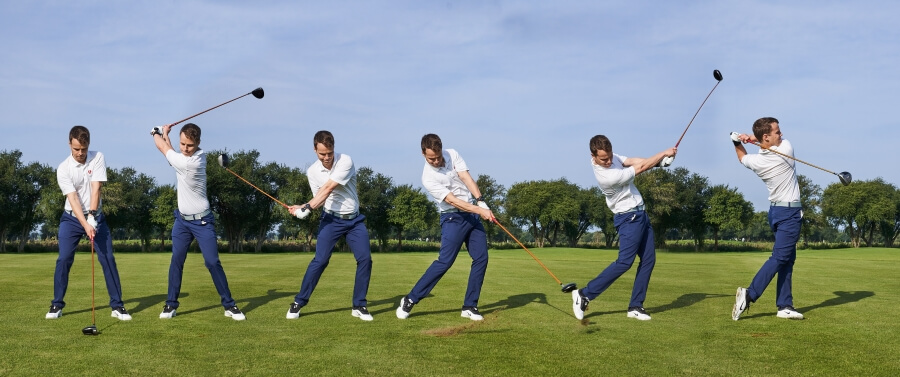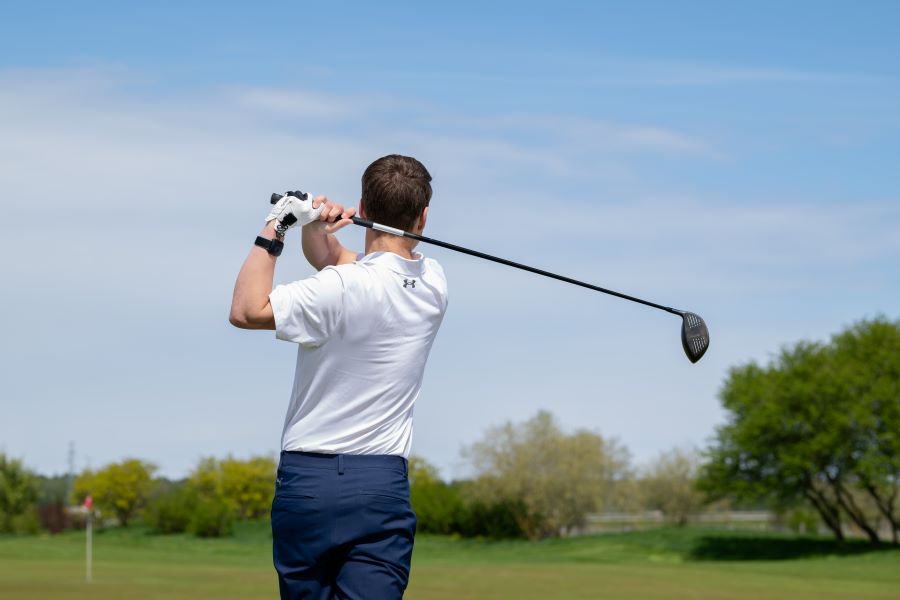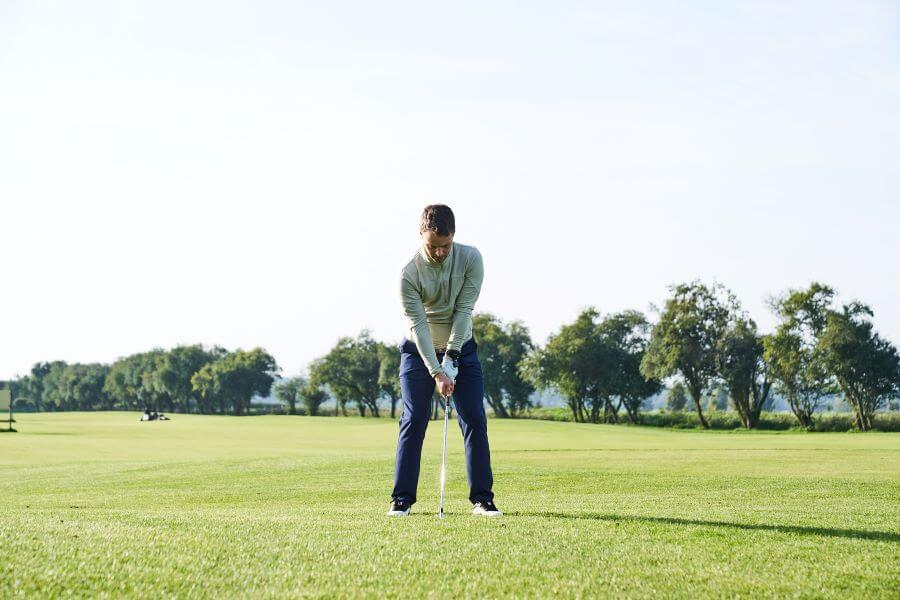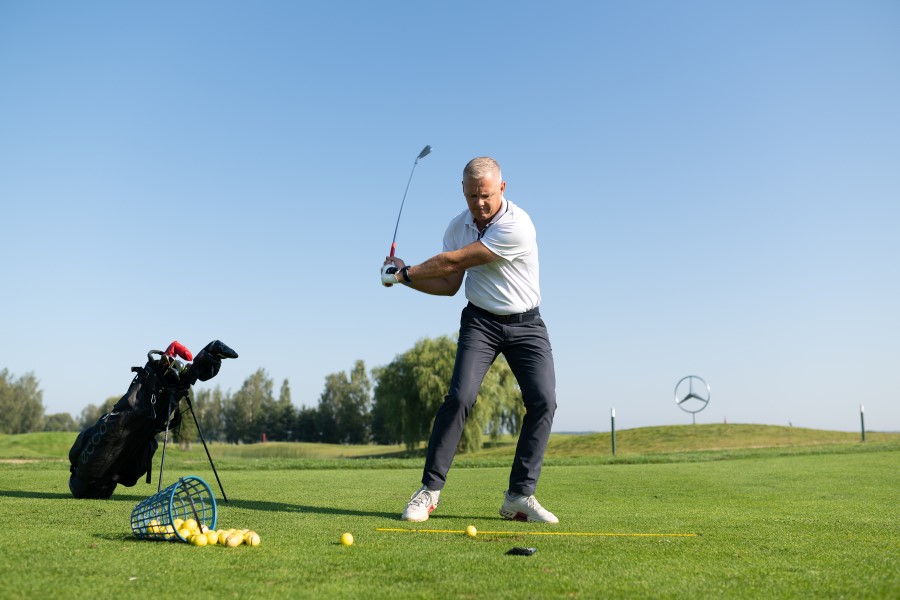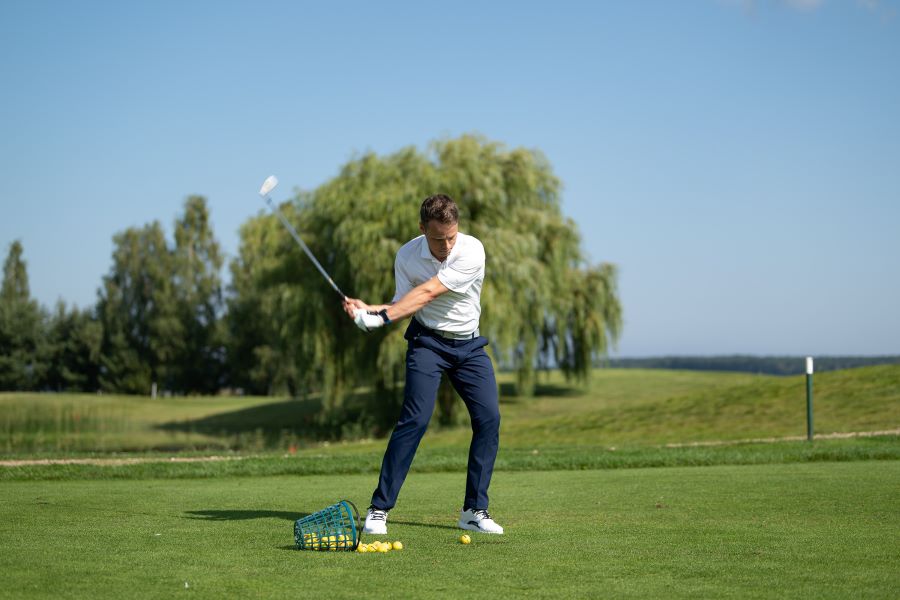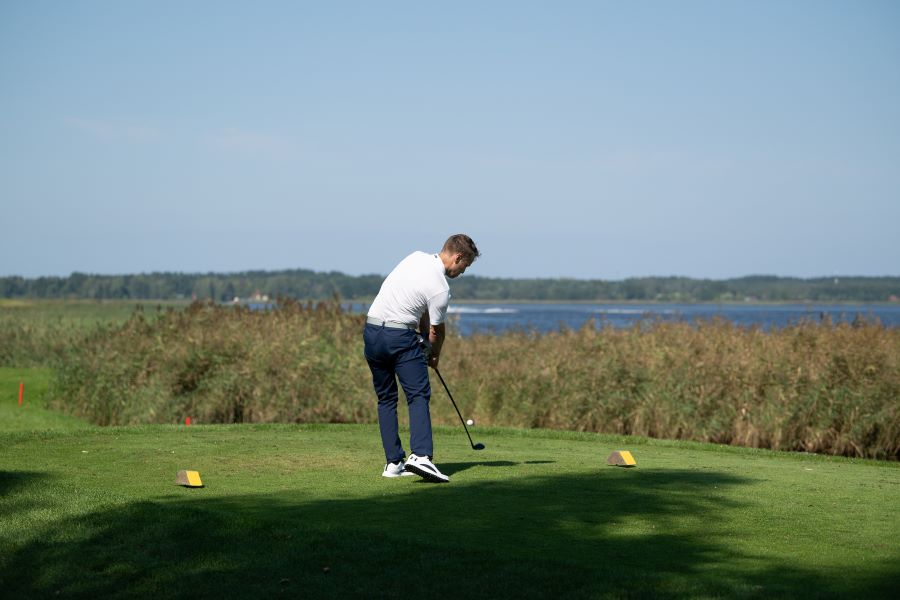Simple & Actionable Steps to Stop Slicing Driver (Forever)
The slice is the most common miss among amateur golfers and one of the most frustrating. Many players live with it, aim left, and hope for the best.
But if you’re tired of watching your drives drift right, it’s time to fix the real problem.
This guide will show you how to stop slicing your driver by improving your setup, wrist mechanics, and swing path with simple drills and feedback tools you can use right away.
How to Fix Slice with Driver (Key Takeaways)
If you don’t have time to head to the range right now and fix this, here are the most important takeaways.
- Slicing happens because of an open clubface at impact, often paired with an outside-to-in swing path.
- Strengthen your grip and slightly adjust ball position to help square the face.
- Minimize wrist extension at the top of the swing to close the clubface earlier.
- Shallow the swing path by using your lower body correctly in transition.
- Use HackMotion to track and train your wrist angles for real-time feedback.
- Try two easy drills: the Motorcycle Drill and Headcover Drill will ingrain better face control and swing direction.
Contents
What Causes a Slice?
A slice is caused by a clubface that is open relative to the swing path. The more open the face is to that out-to-in path, the bigger the curve.
If the face is only slightly open, you’ll hit a fade.
If it’s significantly open, the ball slices hard to the right (for right-handed players).
Actionable Steps to Stop Slicing the Driver Forever
You have likely fixed your slice for a round or two at times, but if you want to fix it forever, you have to make some fundamental changes in your golf game.
Fix #1 – Setup and Grip
Start with the basics of setup and grip; even the best players in the world know that these fundamentals can’t be ignored.
Nail the Setup and Alignment
Your feet, hips, shoulders, and clubface should all be square to the target. Many slicers aim left to “play the slice,” but this exaggerates the path and makes it harder to fix.
Start setting up like you hit it straight, and let your swing follow.
Strengthen the Grip
A stronger grip helps square the clubface. Move your left hand slightly to the right (for right-handed golfers), allowing the right hand to sit more under the club.
This promotes better face rotation and impact control.
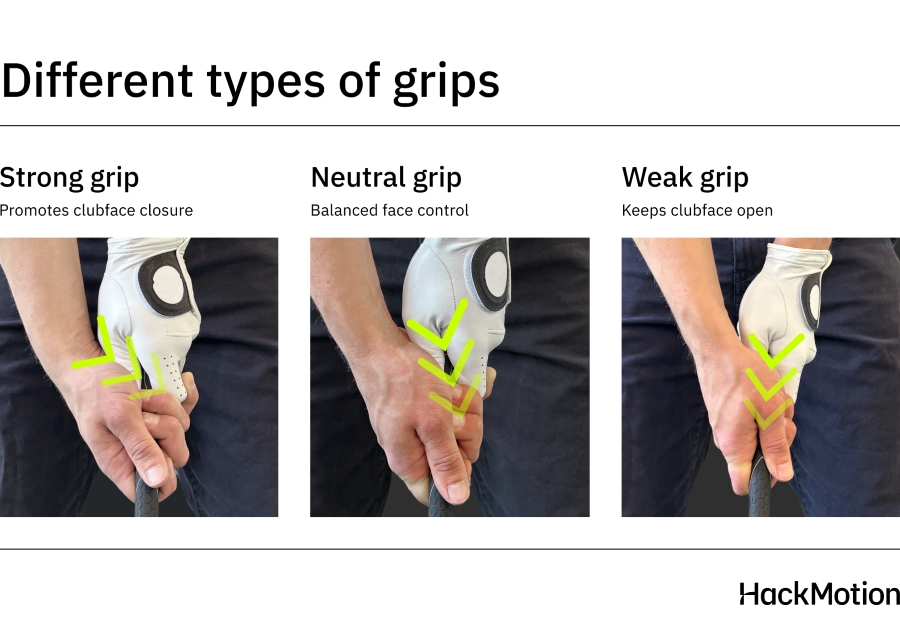
Ball Position Check
Driver setup calls for the ball to be placed forward, usually off the lead heel. But for slicers, that may be too far forward.
Move the ball slightly back to encourage a more neutral or in-to-out path.
Tip: Try starting with your feet together and the ball in the middle. Step back with the trail foot while keeping the lead foot in place; this helps with finding proper ball positioning every time you hit.
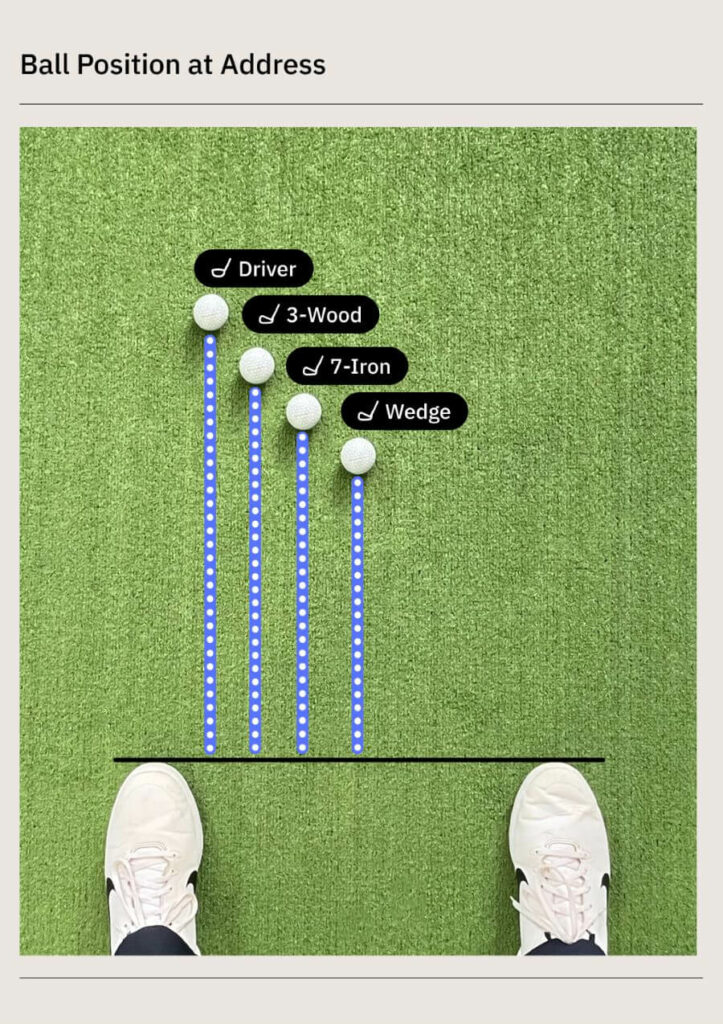
Fix #2 – Control the Clubface by Managing Wrist Extension
The biggest mistake slicers make?
Letting the lead wrist extend too much at the top of the swing.
This opens the clubface and forces you to make last-second compensations.
After analyzing over 1,000,000 swings, we found that slicers often add extension during the backswing and then can’t reduce it in time for impact.
You want a flat or slightly flexed lead wrist at the top. That puts you in a position to return the club square to the ball without flipping or holding on.
The best drill to manage wrist extension and learn to square the clubface is the HackMotion Motorcycle Drill.
While you can practice this drill without the HackMotion on your wrist, you’ll notice that the HackMotion helps you measure and improve your position.
Motorcycle Drill – Master Wrist Flexion in the Downswing
Focus on continuously adding flexion until the club reaches parallel, then smoothly complete your swing.
HackMotion Motorcycle Drill – Step by Step:
- Setup: Address the ball with your normal grip. Slight wrist extension is okay.
- Backswing: Take the club to the top.
- Transition: Feel like you’re revving a motorcycle with your lead wrist. This creates flexion, helping close the clubface.
- Track It: Use HackMotion to see how your wrist extension changes in transition.
- Adjust: Too much flexion = hooks. Too little = face stays open.
Use HackMotion: Train with real-time data and audio cues to stay in the optimal wrist range as you swing.
Fix #3 – Shallow the Swing Path
Most slicers pull the handle of the club down in transition, creating a steep, outside-to-in swing path.
Combined with that an open face and you’ll hit a slice.
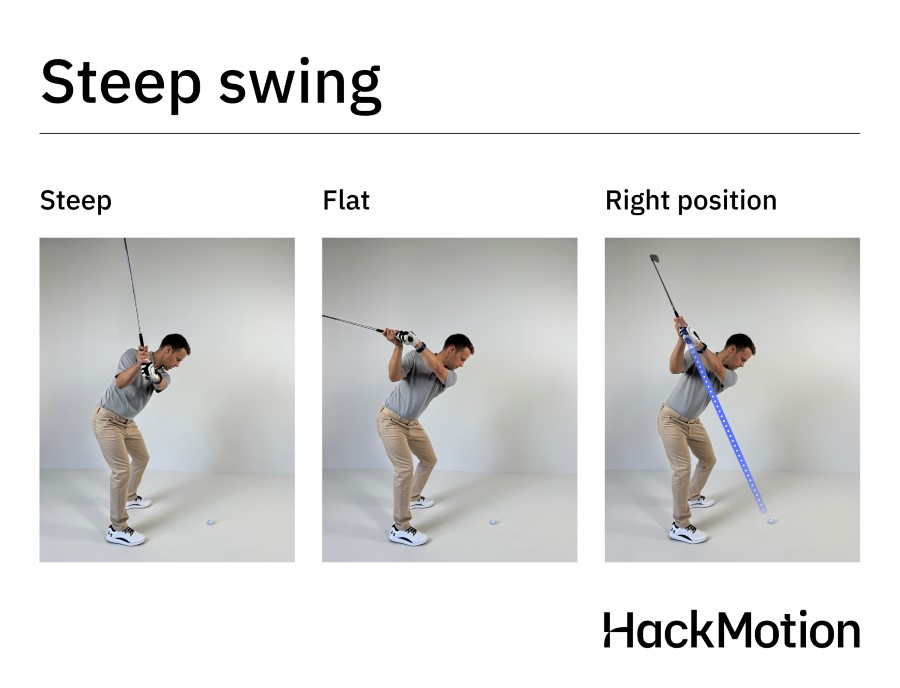
The fix is to let your lower body lead the downswing.
- Start rotating your hips toward the target.
- Let your arms drop naturally while your shoulders stay passive.
- Feel a stretch between your hips and shoulders
The result? A more efficient, inside path and better sequencing for distance and accuracy.
A great drill to work on shallowing your swing path is the head cover drill.
- Video timestamp – 7:37
Headcover Path Drill – Step by Step:
- Set Up: Place a headcover just outside and behind the ball, angled down the target line.
- Takeaway: Make sure your backswing clears the headcover.
- Downswing: Swing inside the head cover — missing it completely.
- Feel the Path: Promote an in-to-out motion and better face-to-path matchups.
Why You Slice the Driver but Not the Irons
Drivers are longer, have less loft, and place you farther from the ball. That makes it harder to control the clubface and return to square. The lack of loft also amplifies sidespin, which means even slight misalignments result in a slice.
You might feel more comfortable with a 3 wood because of its loft and shorter length. But once you train your setup, wrist angles, and swing path, the driver becomes just as controllable.
Final Thoughts
Slicing your driver is fixable. You just need the right mix of setup adjustments, wrist control, and path training.
HackMotion helps speed up this process by giving you real-time data and guided drills specifically targeted at fixing a slice with a driver.
Stick with it, use the Motorcycle and Headcover drills consistently, and you’ll start hitting straighter, longer tee shots before you know it.





